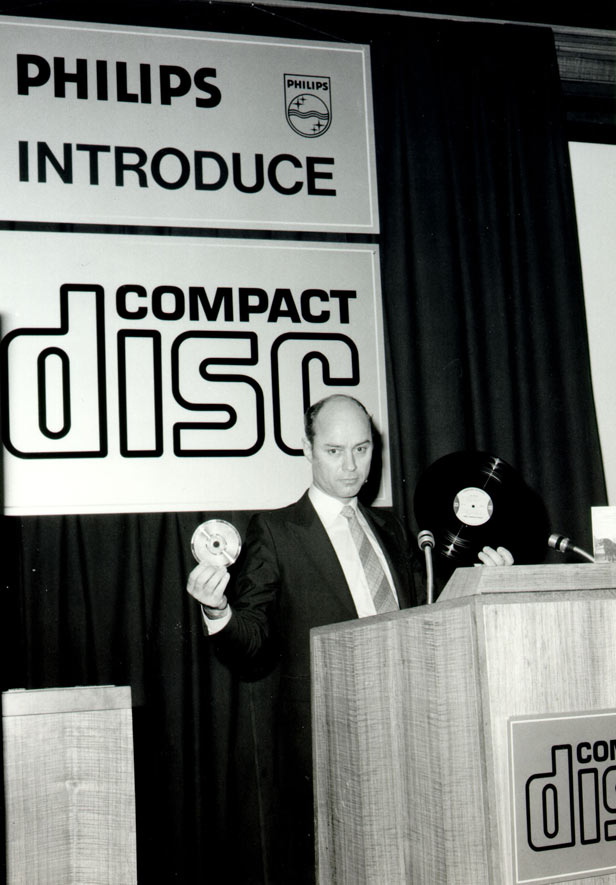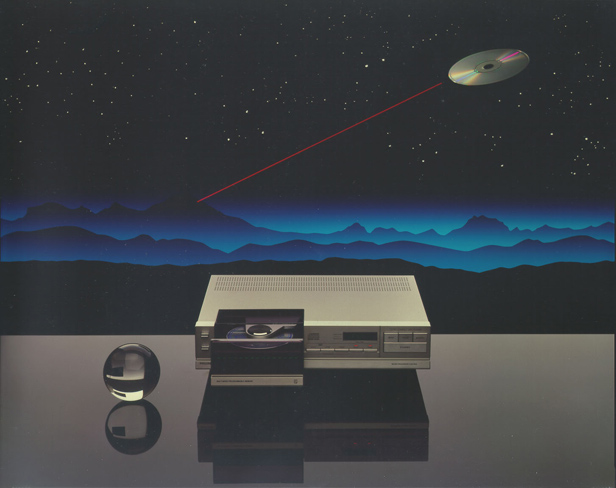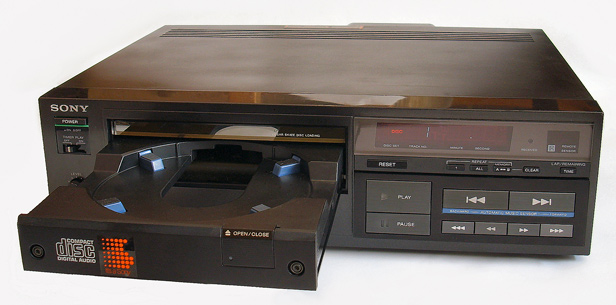On March 8 1979 Philips demonstrated the compact disc for the first time – the Compact Disc Audio Player.
Although this technology has faded a little in the internet age, with the advent of mp3 players and streaming services, it was hugely important.
Piet Kramer, who worked in Philips optical group said at the time the teams didn’t realise the impact the CD would have: “ In the late 70s and early 80s, we never imagined that one day the computing and entertainment industries would also opt for the digital CD for storing the growing volume of data for computer programs and movies.”
Check out the video above from Philips to mark the 25th anniversary of the CD to find out more.
Here are 12 fascinating facts about the CD
Technology giants Philips and Sony developed the CD format together. In 1979, a task force was set-up to create a digital audio disc and set a standard for the music industry that all manufacturers could follow and develop for.
The CD was the first digital format, it was marketed as having better sound and less liable to scratch than analogue formats such as cassette or record.
1.2mm deep and 120mm in diameter, CD’s are made from polycarbonate plastic, with aluminium coating which makes the surface reflective. Data is encoded on a track in indents - known as pits - which start in the centre and spirals out. Lasers in CD players read this information from the disc without physical contact.
CDs must comply with what is known as the ‘Red Book’ audio specification. The document of standards was created by Sony and Philips in 1980.
The world’s first compact disc was manufactured in Langenhagen, Germany on August 17 1982. The first CD made at the plant was Abba’s The Visitors.
The CD has a 74-minute playing time, allegedly because vice president of Sony, Norio Ohg’s wife’s favourite piece of music was Beethoven’s Ninth symphony.
Dire Straits’ Brothers in Arms was the first album to sell over one million CDs. The band and Philips promoted the sound quality, as you can see in this picture.
The BBC’s Tomorrow’s World famously demonstrated the CD in 1981. Host Kieran Prendiville was sceptical “whether there’s a market for this kind of disc” and is seen scratching a BeeGees CD. Urban legend suggested he spread jam on it first.
The first commercially available CD player was the Sony CDP-101, which was released in 1982 priced 168,000 yen (around £922). Sony CEO Nobuyuki Idei based the model name on the numbers 0101, which is number five in binary code, meaning the product was medium class.
Over 200 billion CDs have been sold worldwide. If all the CDs produced were piled up, they would circle the earth six times.
The CD has spawned a range of optical-disc formats: Super Audio CD, CD-ROM, CD-R, CD-RW, DVD, right up to Blu-ray today.
Sales of CDs have been declining for years, in part down to the rise in digital music for portable music players and smartphones, but the decline has been slow. The Neilson end of year music report states that there were 140.8 million CD album sales in 2014, a drop from 165.4 million in 2013, but more than 106.5 million digital sales. Sales of both are being impacted by the popularity of streaming services like Spotify and YouTube.
Do you still use CDs or do you download or stream music? What was your first CD player? Let us know in the Comments below.




